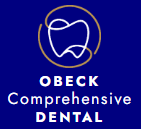To all of those who read this newsletter, thank you. I hope you find this monthly newsletter educational and interesting; perhaps it may even answer some questions about oral health that you may have been pondering. This month’s topic is about sleep apnea and its connection to dentistry.
Obstructive sleep apnea (OSA) is the intermittent narrowing or complete blockage of the upper airway, which prevents airflow. Breathing often stops or become shallow and pauses in breathing can last from a few seconds to a minute. These apnea events can occur 30 times or more per hour! When someone is sleeping, OSA manifests itself as snoring, restlessness, tooth grinding, and gasping in severe cases. During the day, OSA symptoms include waking up tired, waking up with a dry mouth, daytime sleepiness and drowsiness, difficulty concentrating, and high blood pressure.
Obstruction of airflow can lead to a state of intermittent hypoxemia, where oxygen levels in the blood periodically drop below normal. This can lead to long-term cardiovascular consequences, including high blood pressure, stroke, cardiac arrhythmias, and other cardiovascular diseases.
In the past decade, the scope of sleep medicine has extended into the world of dentistry. Dentists are often the first healthcare providers to notice problems with a patient’s airway and potential sleep apnea. There are certain clues that dentists may see when they examine a patient’s medical history, head, neck, and mouth which can help screen for obstructive sleep apnea. These clues include: obesity, high blood pressure, severe wear of the teeth, a large scalloped tongue, the inability to see down a patient’s throat, acid reflux, and a wide neck circumference.
Dentists cannot officially diagnose sleep apnea without an official sleep study. However, dentists can informally screen patients for sleep apnea with a pulse oximeter. A pulse oximeter is a little wristband that patients wear at night that measures a patient’s heart rate and blood-oxygen saturation. If the pulse oximeter shows a patient has low blood-saturation and an erratic heart rate all night, dentists can refer them for an official sleep study that will diagnose sleep apnea. Luckily for patients, sleep studies can now be performed in the comfort of your own home.
You can use the acronym STOP BANG to screen yourself for sleep apnea symptoms as well. If you answer yes to more than 4 of these questions, you are at high risk for sleep apnea.
S – Do you snore loudly?
T – Do you feel tired during daily activities like driving and talking to coworkers?
O – Has anyone observed you stop breathing or choke in your sleep?
P – Do you have high blood pressure?
B – Do you have a body mass index of over 35 kg/m^2?
A – Is your age over 18?
N – Is your neck larger than a 16 inch collar?
G – Gender = male?
Once a diagnosis of sleep apnea has been made, there are two primary treatments. The first is a CPAP (Continuous Positive Airway Pressure) mask and machine which is not typically prescribed by a dentist. CPAP masks are connected to a little machine that gently pumps constant air into a patient’s throat to keep their airway from narrowing. Some patients love their CPAP machines, others hate them and find them hard to sleep with. The second treatment is a mandibular advancement device. This is a mouth guard (Note: NOT the same thing as a regular nightguard to prevent grinding) that patients wear at night that slightly advances their lower jaw to create more airway space. In the morning, a bite aligner must be worn for a few minutes to prevent permanent changes to the patient’s bite. Mandibular advancement devices are a great, unintrusive way to treat mild-to-moderate sleep apnea as long as patients are compliant with the device and the bite aligner.
If you feel like you or your loved one is suffering from sleep apnea, please let me or Dr. Krist know so we can help. We can send you home free-of-charge with a pulse oximeter to wear for a few nights that will screen for sleep apnea. If the pulse oximeter shows low blood-oxygen saturation and an erratic heart rate, we will refer you or your loved one for an official sleep study. Catching sleep apnea early and treating it can add years, or decades, to you or your loved one’s life and it is one of the most positive, life-changing differences that dentists can make in a patient’s life.
Sincerely,
John Obeck DDS
